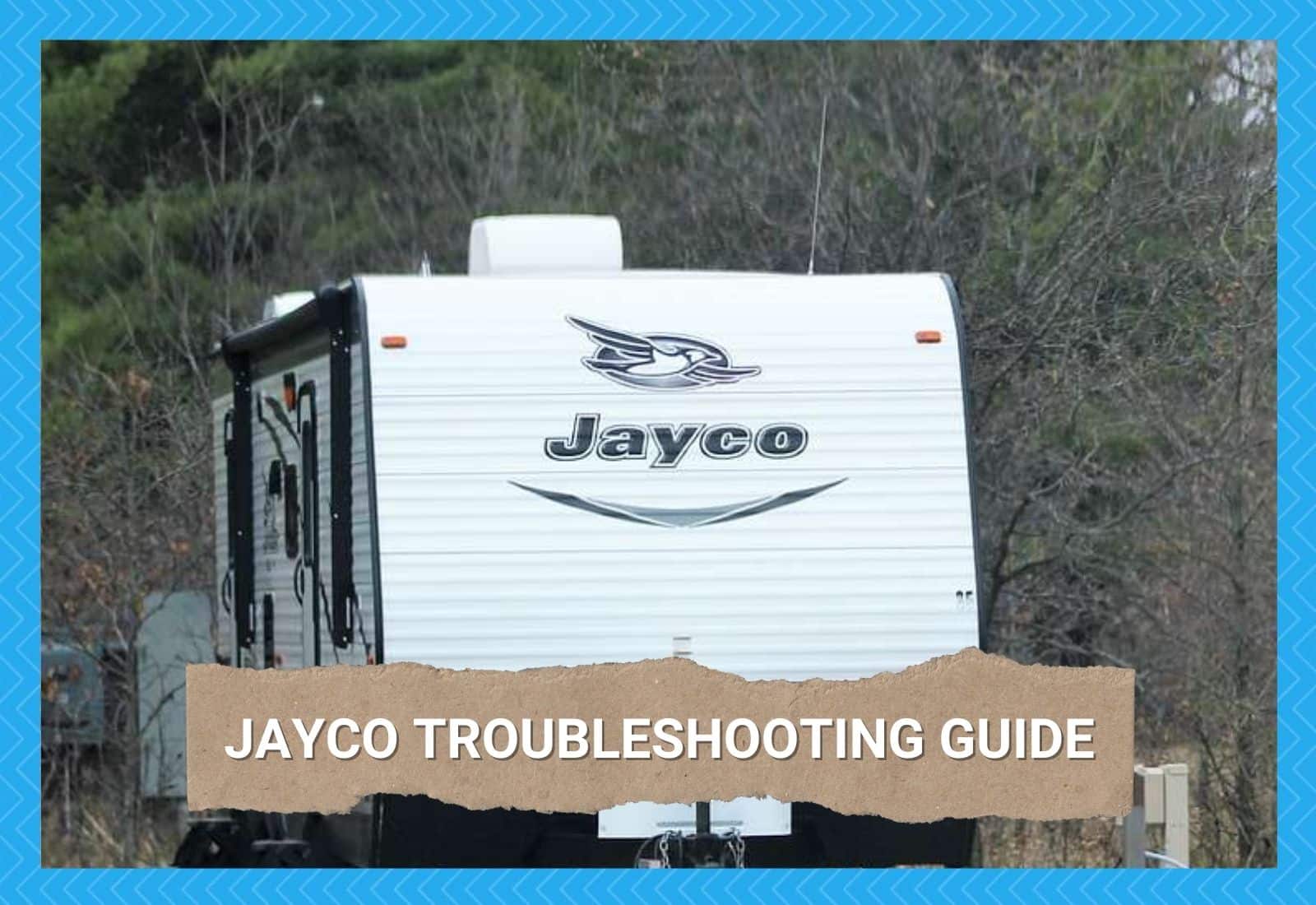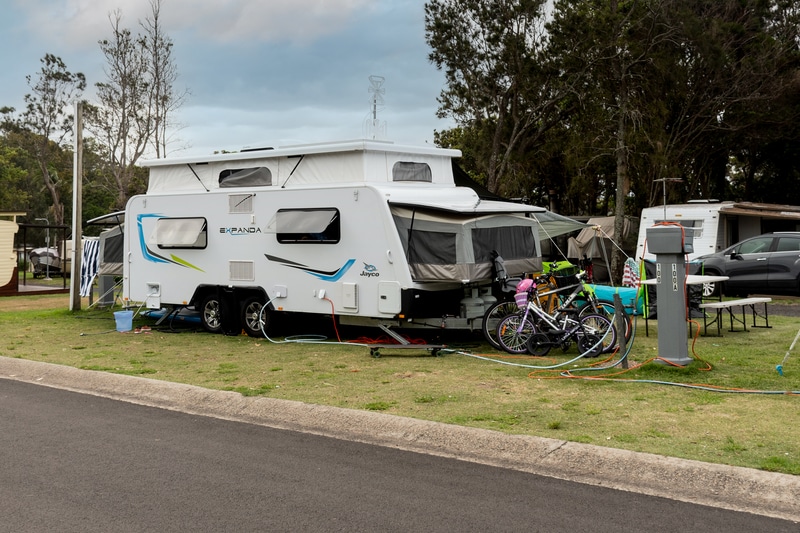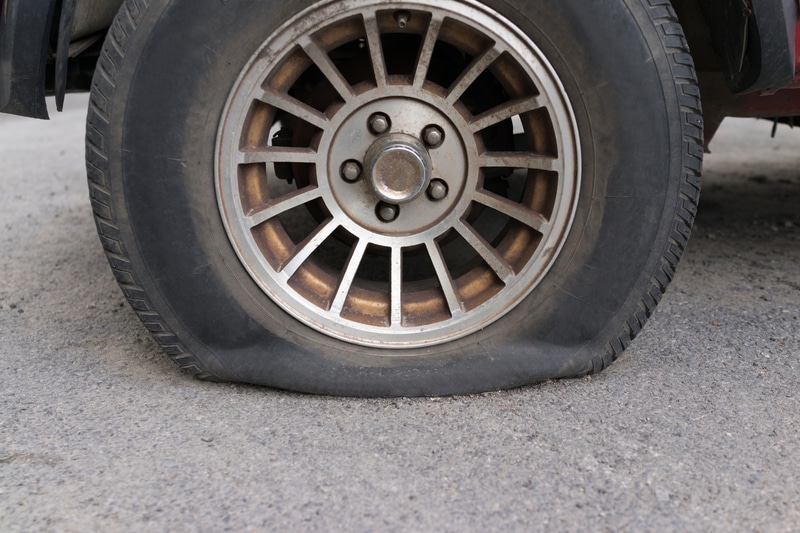
Traveling in a recreational vehicle proves more convenient than commuting or road-tripping. You get to have most of your necessities—a secure sleeping quarter, standard kitchen appliances, a fully functioning toilet, etc.—within reach, letting you camp out longer and more relaxed.
You can also do other activities than just chilling and cooking out because there’s enough space in your RV to keep your biking, skiing, kayaking, and mountain climbing gear.
Still, owning an RV has its fair share of drawbacks. With all the extra features it carries, you’ll have to deal with more issues than the usual hitches of standard pickups and vans.
For instance, the heater might act up, the shower might stop working, or the slide-out might get stuck. When these issues happen, you must know what to do, or else you’ll be in big trouble, especially if help is dozens of miles away.
Even better, you must be able to identify them before they worsen and require more time and budget to fix.
As an RV owner, you should also understand that RVs are not made equal. Brands always try to outperform each other, and some have more funds to innovate than others. This means you’ll have plenty of options, some with more features and are pricier than others.
Choosing a Jayco RV
Investing in a trusted brand allows you to fully enjoy your trip and avoid setbacks due to mechanical problems. Jayco, for example, has been a leading manufacturer of high-grade campers for over 50 years.
They have a great product line, including RVs, wheelers, haulers, and trailers. You can visit Jayco’s website to find out more, but for now, here’s an overview of their perks:
- Plenty of living space – All models are designed with a high ceiling and multiple slide-outs.
- Feels more like home than an RV – They made the amenities look and feel like what most homes have.
- Privacy is a top priority – The brand has also put so much effort and creativity into making the bedrooms and bunkrooms as private as possible.
- Bigger tanks and storage systems – Planning to stay for two weeks or longer? No problem. These RVs have plenty of storage space for supplies.
Jayco Troubleshooting Guide
Just because you’re driving a Jayco RV doesn’t mean you won’t experience malfunctions. Any vehicle will start acting up as it ages and wears out. Your RV is no exception, regardless of its brand and quality.
Some even exhibit problems just months after purchase due to poor maintenance. And even if you diligently take care of your RV, you will still encounter common issues at some point, such as the following.
1. Dead Battery
There will be times when you can’t start your RV because the battery is dead. But it’s not something that happens on its own. You probably didn’t charge it properly, or you always let it go below 30 percent before charging it again.
Freezing outdoor temperatures can also affect an RV battery’s performance. Or, maybe the chemicals inside it are leaking.
You can try a few tricks to jumpstart your RV’s dead battery. One is to connect it to shore power to give it an electrical shock.
Another is to tow the RV with a high-capacity vehicle using the manufacturer-recommended connector until it starts. But remember to do this only if you know how to connect the RV to the tow vehicle correctly.
To avoid battery problems down the road, always charge it at least 8 hours per week and keep it from draining below 50 percent.
Keeping its surface clean also allows it to handle internal heat, preventing damage to the cables and connectors. Additionally, always store the spare battery in a moderately cool, dry compartment.
2. Leaky Roof
If you find yourself blotting small puddles of water on the floor every time it rains, you’re dealing with a severe roof leak. Remember that your RV is essentially a vehicle.
Unlike leaks in a real house, leaks in your RV may be trickier to find and patch. Even worse, they can damage the wiring within your RV’s walls and floor if you don’t fix them soon.
The leak may come from loose or worn-down caulking around connections, such as your solar panel and chimney. If you’ve recently experienced bad weather, flying debris may have punctured your RV’s roof.
Regardless of the reason, you must search for the source and seal it with a heavy-duty sealant. You can temporarily cover your RV’s roof with a tarp to prevent further leaks or while waiting for the adhesive to dry.
3. HVAC Isn’t Working
There’s nothing more uncomfortable than an RV with a broken HVAC. Depending on where you are parked, your RV can be boiling hot or icy cold without a functioning AC or heater, even with all that insulation.
Dirty filters, low coolant levels, and a broken thermostat are the usual culprits. Therefore, these are the first things you should check if your AC isn’t cooling.
Replace dirty filters to allow cool indoor air to circulate. Replenish the coolant before it completely dries up. Or, check if your thermostat is perfectly calibrated. You probably changed the temperature in the past and forgot to change it back.
4. Tire Blowout
Your Jayco RV will have a set of heavy-duty all-season tires. But that doesn’t guarantee immunity from tire blowouts. Sharp objects such as broken glass or metal pieces can still penetrate thick rubber, while extreme temperatures can suck out their pressure.
Use the correct hydraulic jack or ramp to elevate your RV if you need to replace a tire or two. Check its capacity first, and only try to pump once it’s safely pointing at a safe spot on your RV’s frame.
Jacking up on the wrong area could puncture a hole into your RV’s subfloor.
5. Foul Smell
There are only a few places in your RV where a foul smell can come from—the trash under the sink, graywater leaking out through the kitchen sink or bathroom drain, the toilet, or stagnant water in the AC drain pan.
The solution may be different for each source. For instance, if it’s coming from the water in your AC’s drain pan, all you need to do is to throw that water away and wash the pan. But if it’s from your toilet, you may need to empty and sanitize the blackwater tank.
However, don’t throw blackwater into any community sewer system you can find. There are designated areas where you can safely and legally dump it, such as campgrounds, RV parks, or even RV dealerships.
6. Slide-Out Problems
After all that driving and short stops, you’d want to stretch out and settle down. Of course, that means setting up the slide-outs. But sometimes, the slide-out rooms would move more sluggishly than usual or won’t move at all
A few things may lead to this problem—a broken or loose gear, a blown-up motor, or an obstruction along the railing.
If the slide-out room goes opposite the direction you wanted it to—for instance, it slides out instead of retracting- the switch is probably incorrectly wired.
All you need to do is reverse the wiring on the switch plate. Be careful when using the manual override. Don’t place your hand where it can get run over by the gear.
Conclusion
Your RV is your home away from home and probably your second most significant investment. So it’s only fitting that you learn essential maintenance and repair and have a vast network of service providers that can help ensure your RV is in tiptop shape at all times.
You can learn some repair methods, and it’s okay to leave the complicated ones to the experts. But you should also know that RV service centers are less common than car service centers, even in a country where camping is part of family culture.
If you plan on traveling to a place where you might not be able to find a service center when a breakdown happens, be sure to have an extra vehicle. If you have a trailer and a tow vehicle, this won’t be a problem, but you need to be more creative if it’s a camper.
Also, invest in a complete tool kit. You may not have all the power tools, as they are difficult to keep even in a vehicle as bulky as an RV, but make sure to have the basic ones—wrenches, pliers, heavy-duty work gloves, multimeter, tire inflator, etc.
Of course, don’t forget the spare tires, but see that they all have enough air before you put them to work.




I just bought a New 2022 Jayco Feather Micro 166FBS. When the camper was first shown to us, the slide out was not a smooth slide, and the couch arms were super sloppy. We bought the camper, and the couch arms were tightened by the service department at the dealership. I was told where the bolts or screws were, how to access them and it’s a simple tighten. The slide out doesn’t move evenly, it’s very jerky, it’s an uneven slide motion and one of the couch arms has loosened again. The camper was level when we first saw it, then in the dealership campground and is level where it presently rests, and the slide is very jerky. How does one adjust the slide to be a smooth and even motion?
I have a 2022 jayco feather 25rb and it’s suppose to be sateillite ready I connected my satellite to the outside connection and nothing hsppen but when I connect the satellite right to the receiver it works
I have a 2019 jayco melbourne the one side of the slide out works but the other one I pushed it out manually
we just purchased a used 2005 Jayco Designer…love it because it is so much better made than the new campers we have looked at. The outside clearance lights and taillights are still lit when hooked up to the pickup. Any suggestions?